
Akallabêth
The Downfall of Númenor
The Gift of the Valar

In the aftermath of the War of Wrath and the defeat of
Morgoth, the Valar rewarded the loyal Edain by
raising a magnificent island from the depths of the Great Sea. This gift
acknowledged their steadfast alliance with the Elves and their
valiant sacrifices in the battles against the first Dark Lord during the First
Age.
The island was shaped like a five-pointed star, earning it the name Elenna,
which means 'Starwards' in Quenya. Its strategic location in the Great Sea
between Middle-earth and the Blessed Realm of
Valinor made it a bridge between the mortal lands and the
Undying Lands, though closer to the latter by design of
the Valar.
Under the leadership of Elros Tar-Minyatur, who chose a mortal life unlike his
twin brother Elrond, the Edain established their realm in the year 32 of the
Second Age. Elros became the first King of Númenor, and under
his guidance, the foundation was laid for what would become the greatest kingdom
of Men in all of Arda.
The Golden Age
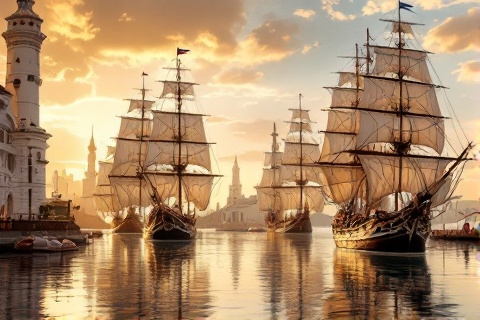
The Valar blessed the Númenóreans with extraordinary gifts
that set them apart from other Men. They were granted lifespans three or more
times longer than other mortals, with their first king Elros living to the age
of 500 years. Their physical stature was equally impressive, with most
Númenóreans standing well over six feet tall, while their wisdom and learning
surpassed all other mortal peoples.
The people of Númenor developed unparalleled expertise in shipbuilding and
navigation. Their vessels were the finest ever crafted by mortal hands, capable
of withstanding the fiercest storms and traveling vast distances. They explored
the eastern waters of Arda extensively, mapping unknown coastlines and
establishing havens along the shores of Middle-earth.
Númenórean civilization reached heights of achievement that would never again be
matched by the race of Men. Their craftsmen created tools and weapons of
extraordinary quality, their architects built cities of stone that seemed to
rival the works of the Elves, and their scholars developed systems of learning
and record-keeping that preserved knowledge across generations.
The kingdom maintained a special relationship with the Elves of Tol Eressëa, who
frequently visited the island bringing gifts of knowledge, artifacts, and
precious materials. These exchanges enriched Númenórean culture immensely, as
the Elves taught them many arts and sciences, while sharing stories and songs
from the Elder Days.
The Ban of the Valar
The Valar established one significant restriction upon the Númenóreans known as
the Ban of the Valar. They were forbidden to sail westward out of sight of their
island's shores toward Valinor, marking this boundary with the term 'Ban of the
Valar' or 'The Ban.'
This prohibition was established not out of malice but as a protection for the
mortal inhabitants of Númenor. The Valar understood that exposure to the
immortal lands would only increase the natural desire of mortals to escape
death, leading to greater suffering rather than blessing.
Despite the prosperity and long life they enjoyed, many Númenóreans became
increasingly preoccupied with the western horizon. The visible shores of Tol
Eressëa in the far distance served as a constant reminder of the immortality
they could not possess, gradually transforming from a source of wonder into one
of festering resentment.
The Shadow of Discontent

As the Second Age progressed, successive generations of Númenóreans developed a
growing obsession with mortality and death. Despite their extended lifespans,
they began to look upon the immortality of the Elves with increasing jealousy,
viewing their own mortality as an unjust punishment rather than the natural gift
Ilúvatar intended it to be.
A significant political division emerged within Númenórean society as the King's
Men, the majority faction, grew increasingly hostile toward the Valar and the
Ban. They began to question why mortals should be denied access to the Undying
Lands and the immortality they believed existed there, leading to a gradual
abandonment of the Elvish traditions and languages.
The Faithful, a minority group centered in the western regions of Númenor,
particularly in Andúnië, maintained their allegiance to the old ways. They
preserved their friendship with the Elves, kept the ancient traditions alive,
and continued to respect the wisdom of the Valar, even as they faced growing
persecution from the King's Men.
The Rise of Ar-Pharazôn
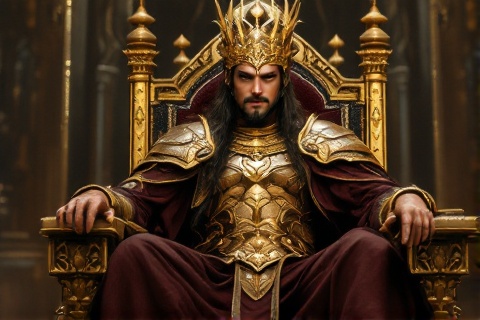
In the year 3255 of the Second Age, Ar-Pharazôn, the most ambitious of all
Númenórean nobles, forcibly took the sceptre of Númenor by compelling marriage
to Queen Tar-Míriel, the rightful heir. This act violated Númenórean law and
tradition, as she was his first cousin and should have ruled in her own right as
Tar-Míriel.
Ar-Pharazôn, who took the title of Golden King, became the most powerful monarch
in Númenórean history. His pride and ambition exceeded all his predecessors, and
he sought to establish his dominion not only over Númenor but over all the lands
of Middle-earth.
Under Ar-Pharazôn's reign, Númenor transformed into an imperial power that
dominated the mortal world. The kingdom established colonies and fortresses
along the coasts of Middle-earth, demanding tribute from other nations and
peoples, while its armies and navies became instruments of conquest rather than
protection and exploration.
The Capture of Sauron
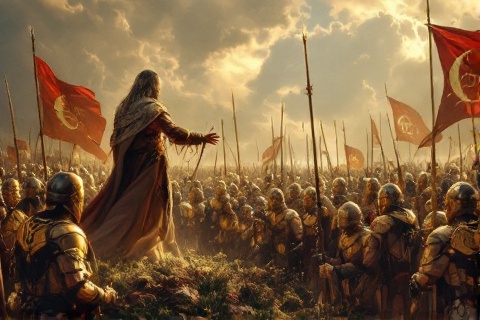
When Ar-Pharazôn learned that Sauron had declared himself
King of Men and was extending his dominion in Middle-earth, his pride would not
permit a rival to his power. In the year 3261 of the Second Age, he led a vast
host to Middle-earth, displaying such might that all servants of Sauron deserted
their master.
Sauron, recognizing that he could not overcome Númenórean military power through
force, chose a subtle path to victory. He surrendered without battle and humbled
himself before Ar-Pharazôn, employing his powers of persuasion and deception to
implement a more insidious plan.
The Dark Lord was brought to Númenor in chains, but this apparent submission
masked his true intent. Within three years, Sauron had risen from prisoner to
become the king's most trusted counselor, using his cunning and supernatural
charisma to manipulate the king's fear of death and desire for immortality.
The Great Temple
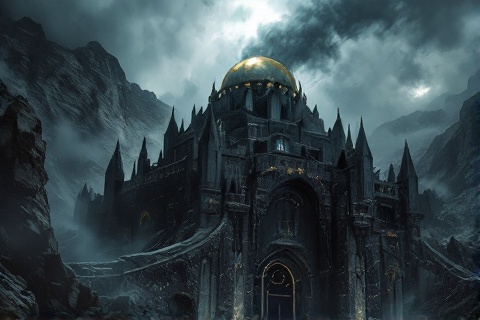
Under Sauron's influence, the worship of Melkor, whom he
called Morgoth the Giver of Freedom, was established in Númenor. The Dark Lord
convinced the Númenóreans that through devotion to Morgoth, they could escape
the Doom of Men and achieve immortality. This corruption represented a complete
abandonment of the teaching of the Valar and the traditions of their
forefathers.
A great temple was constructed in Armenelos, the capital city, with a dome of
silver that turned black from the smoke of countless sacrifices. Sauron
instituted the practice of human sacrifice, claiming that the death of victims
would extend the lives of other Númenóreans. Those who opposed the new religion
or remained faithful to the Valar were often offered as sacrifices in these
bloody rituals.
The ultimate symbol of Númenor's fall into darkness was the destruction of the
White Tree, Nimloth, a gift from the Elves
that represented the link between Númenor and the Valar. Sauron convinced
Ar-Pharazôn to cut down and burn the tree as an offering to Morgoth, though not
before Isildur managed to steal a fruit from which a seedling would later grow.
The Great Armament
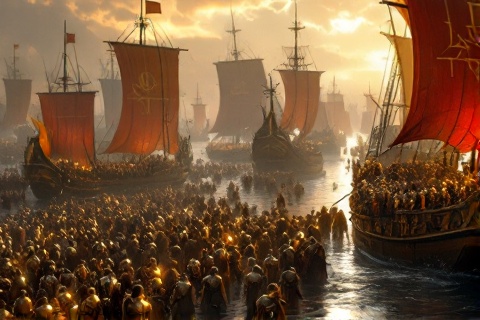
In his final act of hubris, Ar-Pharazôn commissioned the construction of the
Great Armament, the largest fleet ever built in Arda. The harbors of Númenor
were filled with ships of war, and weapons were forged in unprecedented
quantities as the king prepared to challenge the Valar themselves.
The Faithful, led by Amandil and his son Elendil, recognized the approaching
doom of their homeland. They secretly prepared nine ships with their families,
followers, and precious heirlooms of their civilization, including the seedling
of Nimloth and the ancient artifacts of their people.
Despite warnings from the Faithful and signs of impending disaster, Ar-Pharazôn
set sail with his vast armada in the year 3319 of the Second Age. His goal was
to make war upon the Valar and seize the Undying Lands by force, believing this
would grant him the immortality he desperately sought.
The Downfall

When Ar-Pharazôn's forces set foot upon the shores of Aman in defiance of the
Ban, the Valar laid down their guardianship of Arda and called upon Eru Ilúvatar
himself. The One intervened directly in the affairs of his creation for the
first and only time since the making of the world.
The punishment for this transgression was catastrophic beyond imagination. Eru
caused a great chasm to open in the sea, into which the entire island of Númenor
and its armies were pulled. A massive wave, tall as a mountain, swept over the
land, drowning the island and its inhabitants beneath the waters of the Great
Sea.
The catastrophe reshaped the entire world. The flat world was made round, and
the Undying Lands were removed from the physical realm altogether. From that
time forward, no mortal ship could sail the Straight Road to Valinor except by
special grace of the Valar.
The Faithful's Escape
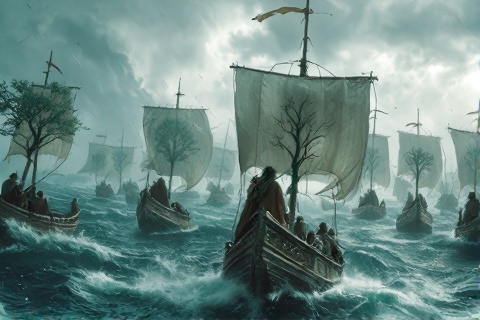
Elendil, along with his sons Isildur and Anárion, led the nine ships of the
Faithful through the greatest storm in history. These survivors of Númenor's
destruction were guided by divine providence to the shores of Middle-earth,
where they would establish new realms in exile.
The Faithful brought with them the seeds of Númenórean culture and civilization.
They preserved the scrolls, artifacts, and knowledge of their homeland,
including the Seven Seeing-stones, the White Tree, and
the ancient weapons and treasures of their people.
In Middle-earth, the survivors founded the Realms in Exile. Elendil established
the northern kingdom of Arnor, while his sons jointly ruled the
southern realm of Gondor. These kingdoms, though lesser than
Númenor at its height, would preserve the legacy of
Westernesse through the Third Age and
beyond.
